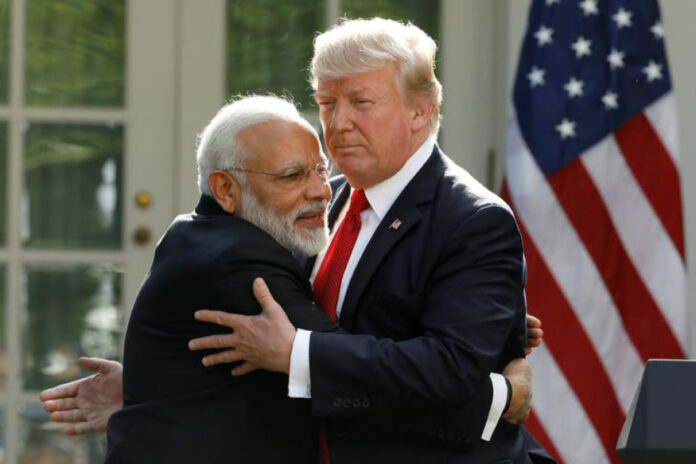WASHINGTON/NEW DELHI: The United States and India are racing to negotiate a limited trade deal that US President Donald Trump and Indian Prime Minister Narendra Modi can sign at the United Nations General Assembly in New York at the end of September, people familiar with the talks said.
A deal between the world’s most populous democracies would be a welcome victory for Trump, whose administration has made little headway negotiating an end to its prolonged trade war with China. Trump is also expected to sign a deal with Japanese Prime Minister Shinzo Abe next week that lowers Japanese farm tariffs.
The deal under discussion with India would lower some tariffs on US produce and restore preferential treatment for some Indian exports to the United States, the sources said.
Trump and Modi will meet this Sunday in Houston at an Indian-American rally dubbed “Howdy Modi!” in a 50,000-seat stadium — a sign of their warming relations, which are contributing to expectations for a “mini-deal.”
“There’s a push to get something done with India, with an eye for UNGA,” said a Washington-based source familiar with the discussions.
Trump has demanded better terms of trade from most of the top commercial partners of the United States, and blames previous deals for the loss of millions of US manufacturing jobs.
US-India trade relations have been fraught. Trump has repeatedly complained about India’s high tariff rates, including a 50pc tariff on Harley-Davidson motorcycles.
The United States has also taken issue with India’s new investment rules on e-commerce that limit how companies like Amazon.com Inc and Walmart-backed Flipkart can do business in a rapidly growing online market set to touch $billion by 2027.
“We’ve been talking to the Americans, we have engaged them for many months now,” Indian Foreign Minister Subrahmanyam Jaishankar said at a news conference this week. “My expectation is that some of the sharper edges, they would be addressed in some forms in the not too distant future.”
A US trade representative spokesman did not respond to a request for comment on the US-India talks.
Modi, like Trump, has used tariffs to try to boost investment in manufacturing, a key part of his “Make-In-India” campaign to attract foreign cash and create factory jobs for millions of youth entering the workforce.
Apple Inc supplier Foxconn (2317.TW) recently expanded production of iPhones in India to avoid a 20pc import tariff and diversify its supply chain from China.
Bilateral US trade with India, at $142 billion last year, is just a fraction of the $737 billion in US-China trade.




